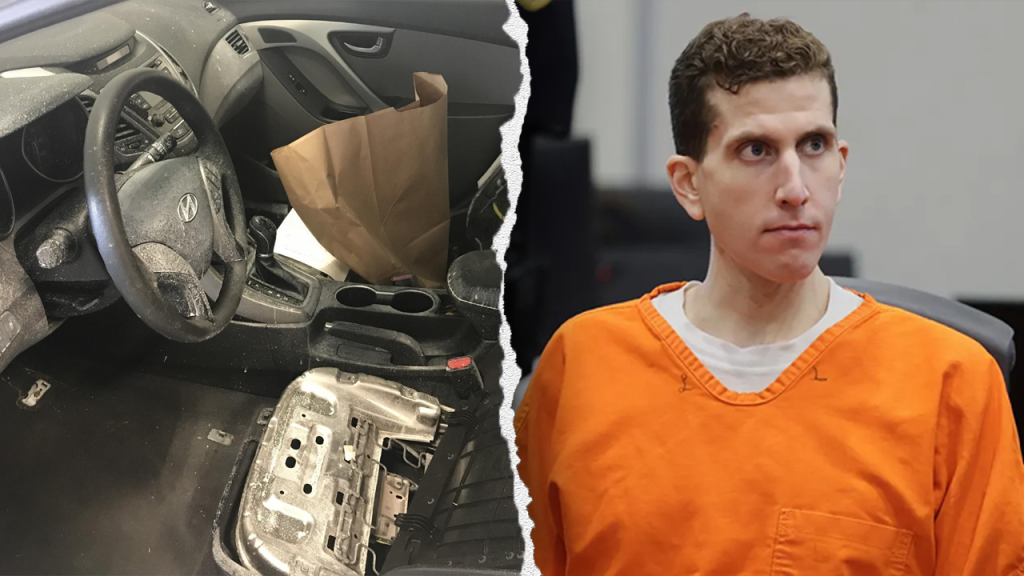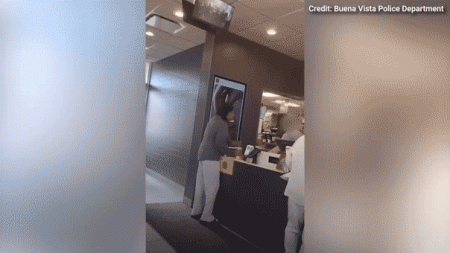Inside the Idaho Student Murder Investigation: A Deeper Look at Bryan Kohberger’s Case
Recently, the Idaho State Police released hundreds of photographs from their investigation into the tragic University of Idaho student murders, offering new insights into both the crime scene and Bryan Kohberger, the former criminology Ph.D. student convicted of the killings. Among the most notable images are those of Kohberger’s white Hyundai Elantra after authorities seized it from his parents’ home in Pennsylvania. While the exterior of the vehicle appears noticeably dirty, the interior photos reveal something more curious—a white substance covering the steering wheel, dashboard, and center console. This has sparked debate among criminal justice experts about whether Kohberger attempted to clean evidence from the vehicle’s interior or if the substance was left by investigators during their examination. Joseph Giacalone, a former NYPD cold case investigator and criminal justice professor at Penn State Lehigh Valley, finds it difficult to believe that Kohberger, with his criminology background, wouldn’t have taken precautions to minimize evidence transfer. “The Locard’s Exchange Principle, the theory of transfer between objects, is something that every criminal justice student knows about,” Giacalone noted, explaining that regardless of precautions, evidence would likely have transferred to Kohberger’s outermost garments during the commission of the crime.
The photographs also reveal the interior of the off-campus rental house at 1122 King Road where the murders took place—a house that has since been demolished. The images paint a picture of a typical college living situation: cases of alcohol scattered throughout common areas, a beer pong table set up, and empty cans on the floor. More poignantly, glimpses of the victims’ lives remain frozen in time—a half-eaten box of Jack in the Box fries sits atop the microwave, a delivery bag addressed to “Xana” nearby, and a flag in the living room proclaiming “Saturdays are for the girls.” These details humanize what was once a home for Madison Mogen, Kaylee Goncalves, Xana Kernodle, and Ethan Chapin before their lives were tragically cut short in the early morning hours of November 13, 2022, just before Thanksgiving break.
The investigation photos show additional forensic evidence collection efforts throughout the house. A blue substance visible in some images appears to be Amino Black, according to former NYPD crime scene investigator Carlos Pantoja. This substance is used by law enforcement to detect fingerprints and blood without compromising underlying DNA evidence. The photos also capture handprints on windows, though authorities have previously stated these weren’t connected to the case. A medical kit left by the Moscow Police Department can be seen on the floor next to a table, a silent reminder of the first responders who arrived at the horrific scene. Notably absent from the released photos are images from inside the bedrooms where the murders occurred—the families of Madison Mogen and Ethan Chapin have petitioned the court to block the release of these more sensitive images, resulting in a temporary restraining order.
The four victims—21-year-old best friends Madison Mogen and Kaylee Goncalves, along with 20-year-olds Xana Kernodle and her boyfriend Ethan Chapin—were killed after returning home from a night of heavy drinking with friends. The senseless violence occurred around 4 a.m., while others in the house remained unaware of the horror unfolding in their midst. Court documents previously released indicate that despite the seemingly methodical nature of the crime, investigators did not find DNA from any of the victims inside Kohberger’s vehicle, raising questions about how thoroughly he may have cleaned the car or what precautions he took before and after the murders. This absence of victim DNA in the vehicle stands in contrast to other evidence that ultimately led to Kohberger’s conviction.
The investigation into the quadruple homicide captivated public attention for months, beginning with a manhunt that lasted until Kohberger’s arrest at his parents’ home in Pennsylvania in late December 2022. The case struck a particular chord with the public partly because Kohberger was studying criminology at Washington State University, just across the state line from the University of Idaho—suggesting a killer who was studying the very field dedicated to understanding and preventing such crimes. The horrific nature of the attacks, occurring in what should have been a safe space for the college students, intensified public interest and concern. For the Moscow, Idaho community, the murders shattered their sense of security and marked one of the most traumatic events in the small college town’s history.
Bryan Kohberger is now serving four consecutive life sentences plus an additional 10 years at the Idaho Maximum Security Institute for the murders. Reports suggest he has been complaining about the food quality and alleged harassment from other inmates—a stark contrast to the suffering he inflicted on his victims and the ongoing grief experienced by their families. The release of these investigation photos comes as the families continue to seek some measure of privacy and dignity for their lost loved ones, particularly regarding the most graphic crime scene images. While the investigation photos offer some insight into the case, they also serve as a somber reminder of four young lives cut tragically short and the lasting impact of this senseless violence on the University of Idaho community and beyond. A court hearing regarding the release of additional photos, initially scheduled for this week, has been postponed until next week, as the judicial system continues to balance public interest in the case with respect for the victims and their families.











